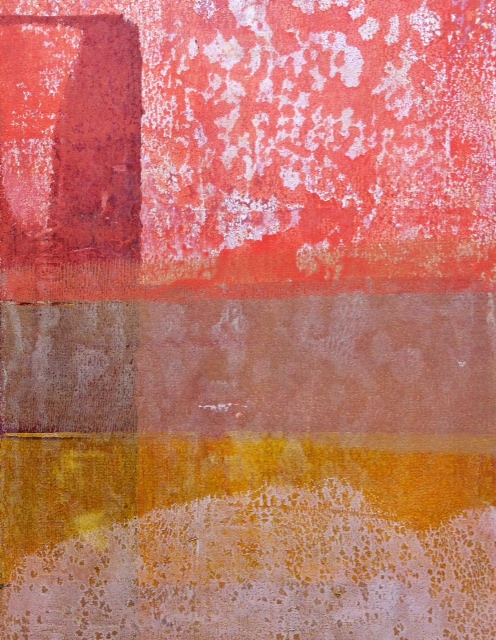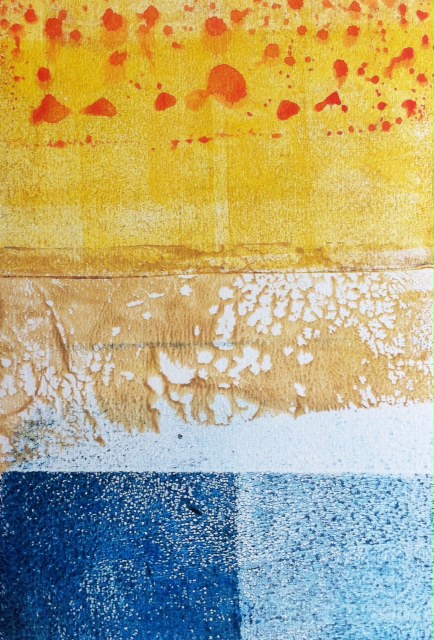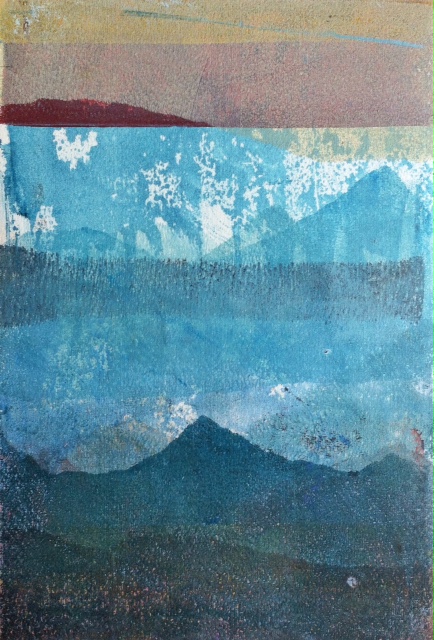As I mentioned in my last post, I was set to take an online Gelli Plate Printmaking class this week with Carla Sonheim, a gentle and humorous soul, whose generous manner makes even the most embarrassing flops seem like a blessing in disguise. I felt excited about the class; I knew it would be fun and that I would meet any challenges that arose with open arms.
Clearly a woman who knows her way around a print studio, Carla packed a lot of information into every day of the 5 day course. I headed off to work afterward each day repeating her words over and over like a mantra, "thin, thinner, thinnest, watercolor" (referring to how you can stretch out an application of paint on the plate.)
We worked on a suite of 8 prints and each day, we could, if we wished, post our work on Flickr. I played with the colors, enjoying the sensation of the brayer (hand roller used in printmaking to spread ink) on the plate and the soft 'squish squish' of acrylic on the gel plate.
On Wednesday, we worked with the same 8 prints, adding layers onto them with stencils--and it got a little trickier. In the first roll out, the paper is a blank landscape and anything goes. When adding additional layers, there's that familiar feeling of discomfort and simultaneous attachment. What happens if I screw it up?
Like any kind of change or alteration, with printing, it's safer to stay with what's familiar, even when it limits how far you can go. Fortunately, the process leads the way. Apply a stencil on paint, put paper on the stencil and whole new horizons open up.
I looked forward to the final day, when Carla told us that she'd share some ways to continue developing the prints--even when the next step wasn't clear.
Unfortunately, fate intervened in the form of boiling eggs accidentally left on the stove by a guest. My husband came home to a house filled with smoke and a shrieking chorus of alarms. We learned that we would have to move out until the microscopic deposits of burnt protein on every surface in the house were removed. I wasn't able to work on the last lesson.
The nature of gelli printing is also filled with blips, spots and full on bloopers. Mistakes are made. Carla noted that one of the best things about these "accidents" (besides consigning them to a sludge pile) is to study them. Pick apart what works and what doesn't. Where are the values too similar? Where does more texture need to be added?
As I witness and experience the effects of this forgetful mistake upon my family's life, I find myself examining our own "virtual prints." We've been asking ourselves questions and finding that there is a lot we can let go of: clothes, papers, attitudes and attachments. A few shifts in attitude are powerful.
I marvel at the correspondences between art and life. Are mistakes truly the way we find our way to change?






